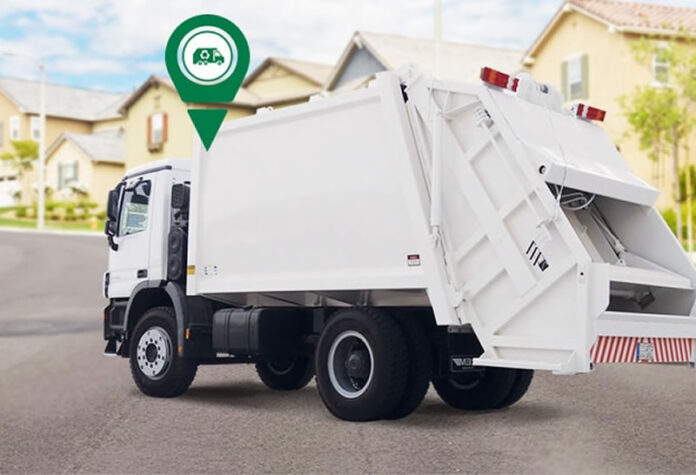Businesses face a range of stringent requirements to meet the demands of environmental concerns. These requirements can vary depending on the industry, location, and specific environmental issues.
Here are some examples of the types of stringent requirements that businesses may encounter:
Environmental Regulations: Governments enact environmental regulations to protect the environment and promote sustainable practices. These regulations may cover areas such as air and water pollution, waste management, greenhouse gas emissions, and hazardous substances. Businesses are often required to comply with these regulations, which can involve obtaining permits, implementing pollution control measures, monitoring emissions, and reporting on environmental performance. They may vary from region to region, determined by local environmental factors.

Emission Standards: Many industries, particularly those with high carbon emissions, are subject to stringent emission standards. For example, power plants may be required to limit their sulfur dioxide, nitrogen oxide, and mercury emissions. Vehicle manufacturers must comply with fuel efficiency standards and emission limits for pollutants like carbon dioxide, nitrogen oxides, and particulate matter.
Waste Management: Businesses are often obligated to properly manage and dispose of their waste in an environmentally responsible manner. This may involve separating recyclable materials, implementing waste reduction measures, treating hazardous waste, or utilizing proper disposal methods for specific types of waste. This can be better managed with the help of waste software such as Scaleit.
Using waste software can assist businesses in meeting the demands of environmental concerns in several ways:

- Waste Tracking and Management: Waste software can help businesses effectively track and manage their waste streams. It enables them to record and monitor the types and quantities of waste generated, along with their disposal methods. This information is crucial for complying with waste management regulations and implementing waste reduction strategies. By accurately tracking waste, businesses can identify opportunities for waste minimization, recycling, or reuse, thus reducing their environmental footprint.
- Compliance with Regulations: Waste software often incorporates features that facilitate compliance with waste management regulations. It can help businesses stay up to date with the latest regulatory requirements and ensure they are following proper waste disposal procedures. The software may provide guidance on waste classification, required documentation, permits, and reporting, streamlining the compliance process and reducing the risk of non-compliance penalties.
- Reporting and Documentation: Environmental reporting is a key aspect of meeting regulatory demands and demonstrating sustainability efforts. Waste software can streamline the reporting process by generating accurate and comprehensive reports on waste generation, recycling rates, disposal methods, and associated costs. This enables businesses to provide transparent and reliable information to regulators, stakeholders, and customers, showcasing their commitment to environmental responsibility.
Source: onlinemba.wsu.edu - Analytics and Performance Monitoring: Waste software often includes analytical tools that allow businesses to track key performance indicators (KPIs) related to waste management. These tools can provide valuable insights into waste generation patterns, identify areas of improvement, and highlight opportunities for operational efficiencies. By analyzing the data and metrics provided by the software, businesses can make data-driven decisions to optimize their waste management strategies and reduce environmental impact.
- Collaboration and Communication: Waste software often supports collaboration and communication among different stakeholders involved in waste management, including internal teams, waste haulers, recycling facilities, and regulators. It can streamline communication channels, facilitate data sharing, and ensure that everyone has access to accurate and up-to-date information. Effective collaboration improves coordination, enhances compliance, and fosters a more sustainable waste management ecosystem.
- Risk Mitigation: Improper waste management can lead to environmental pollution, legal liabilities, and reputational damage. Waste software helps mitigate these risks by providing businesses with a systematic approach to waste management. It ensures proper documentation, adherence to regulations, and the ability to identify and address potential compliance issues proactively.

Energy Efficiency: Energy consumption is a significant contributor to environmental impact. Many jurisdictions have implemented energy efficiency standards and requirements for businesses. These may include mandatory energy audits, energy management systems, or targets for reducing energy consumption. Businesses may also be encouraged to adopt renewable energy sources or improve the energy efficiency of their operations.
Environmental Impact Assessments: Before undertaking certain activities, such as large-scale construction projects or resource extraction, businesses may be required to conduct environmental impact assessments. These assessments evaluate the potential effects of the proposed activities and may require the development of mitigation measures to minimize negative impacts.
Reporting and Transparency: Some jurisdictions mandate that businesses report their environmental performance and disclose information related to their impact. This can include greenhouse gas emissions, water usage, waste generation, and other relevant metrics. Such reporting requirements aim to increase transparency and accountability, allowing stakeholders to assess a company’s environmental performance.

Sustainable Procurement: Increasingly, businesses are being encouraged or required to adopt sustainable procurement practices. This involves considering the environmental impact of the products and services they purchase, favoring suppliers with environmentally friendly practices, and seeking products with reduced carbon footprints or certifications indicating sustainability.
It is important to note that the specific requirements businesses face can vary significantly depending on the industry, jurisdiction, and evolving environmental priorities. Staying informed about applicable regulations and engaging in proactive environmental management can help businesses meet these demands effectively.
It is your job as a business owner to stay on top of requirements. Lack of awareness never works as a defense against fines and restrictions resulting from failed tests or missed reporting deadlines.
Should the requirements in your industry come with more costs than you can handle at this stage, working with a contract manufacturer who is already setup to fulfill these requirements can save you time, money and help you to focus your energy on the part of the business actions that lead to growth. Contract manufacturers often specialize in specific industries and have in-depth knowledge and expertise in implementing sustainable practices. They stay updated on environmental regulations, best practices, and emerging technologies related to waste management, energy efficiency, and environmental impact reduction. By partnering with a contract manufacturer, businesses can leverage their expertise and benefit from their experience in meeting environmental requirements effectively.
They also invest in advanced facilities, equipment, and technologies to optimize production processes and minimize environmental impact. They may have specialized waste treatment systems, energy-efficient infrastructure, or environmentally friendly manufacturing processes in place. By utilizing the facilities and technologies of a contract manufacturer, businesses can reduce their own footprint and leverage the resources and infrastructure that are specifically designed to meet stringent environmental requirements.
Collaborating with a contract manufacturer allows businesses to share the responsibility and accountability for meeting environmental requirements. Contract manufacturers have a vested interest in maintaining their environmental credentials and complying with regulations, as their reputation and business relationships depend on it. By entrusting certain manufacturing processes or components to a contract manufacturer, businesses can ensure that they are working with a partner who shares their commitment to environmental sustainability. This shared responsibility promotes a collective effort toward meeting goals and can provide reassurance to stakeholders that the business is actively addressing environmental concerns.










